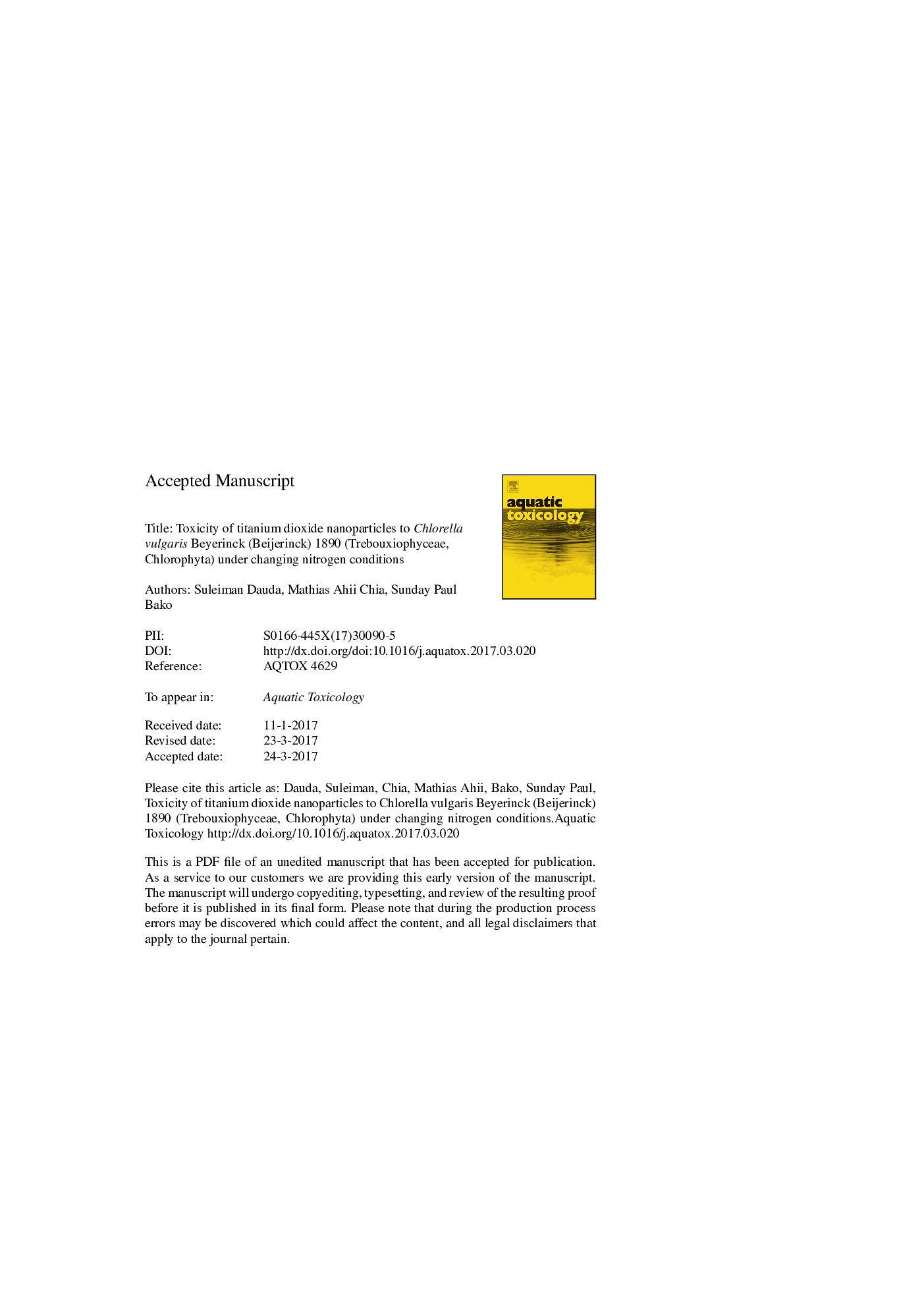| Article ID | Journal | Published Year | Pages | File Type |
|---|---|---|---|---|
| 5764301 | Aquatic Toxicology | 2017 | 33 Pages |
Abstract
The broad application of titanium dioxide nanoparticles (n-TiO2) in many consumer products has resulted in the release of substantial quantities into aquatic systems. While n-TiO2 have been shown to induce some unexpected toxic effects on aquatic organisms such as microalgae, the influence of changing nutrient conditions on the toxicity of the metal has not been investigated. We evaluated the toxicity of n-TiO2 to Chlorella vulgaris under varying nitrogen conditions. Limited nitrogen (2.2 μM) decreased growth and biomass (dry weight and pigment content), while lipid peroxidation (malondialdehyde content), glutathione S-transferase activity (GST) and peroxidase (POD) activity were increased. Similarly, exposure to n-TiO2 under replete nitrogen condition resulted in a general decrease in growth and biomass, while GST and POD activities were significantly increased. The combination of limited nitrogen with n-TiO2 exposure further decreased growth and biomass, and increased GST and POD activities of the microalga. These results suggest that in addition to the individual effects of each investigated condition, nitrogen limitation makes C. vulgaris more susceptible to the effects of n-TiO2 with regard to some physiological parameters. This implies that the exposure of C. vulgaris and possibly other green algae to this nanoparticle under limited or low nitrogen conditions may negatively affect their contribution to primary production in oligotrophic aquatic ecosystems.
Related Topics
Life Sciences
Agricultural and Biological Sciences
Aquatic Science
Authors
Suleiman Dauda, Mathias Ahii Chia, Sunday Paul Bako,
